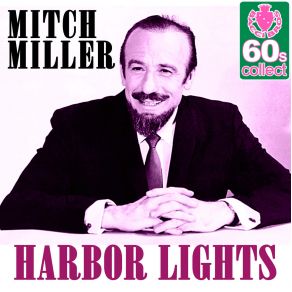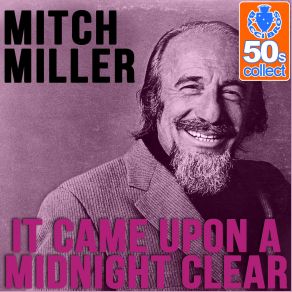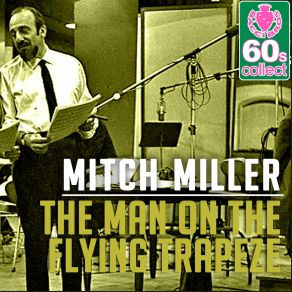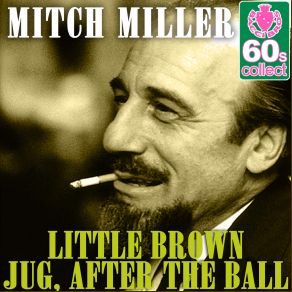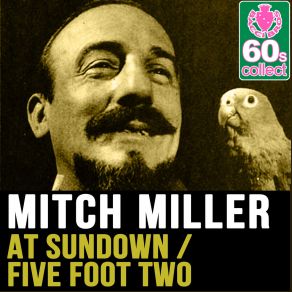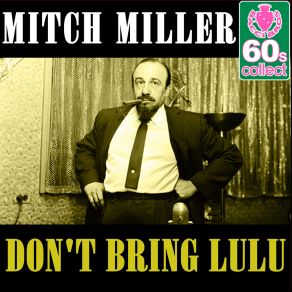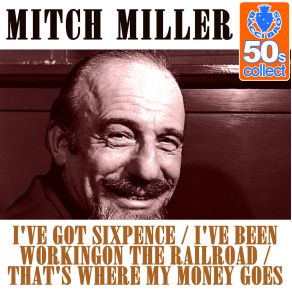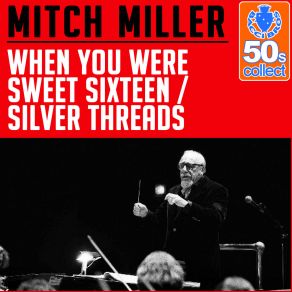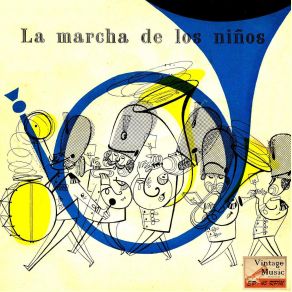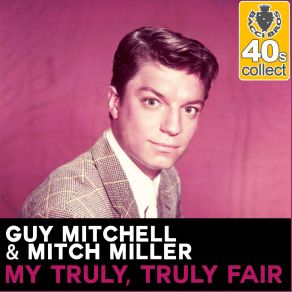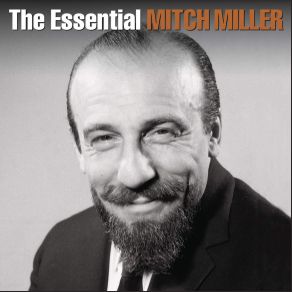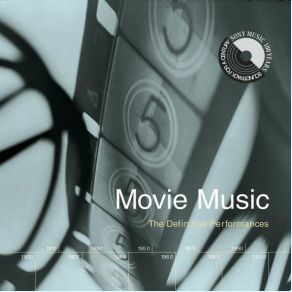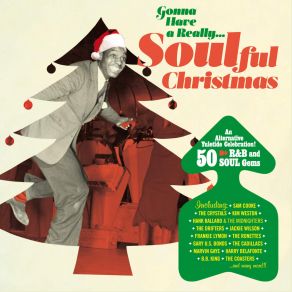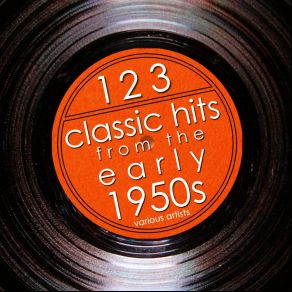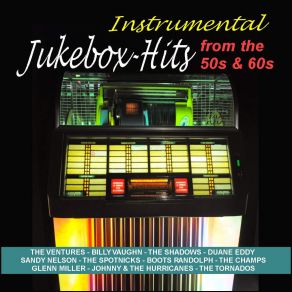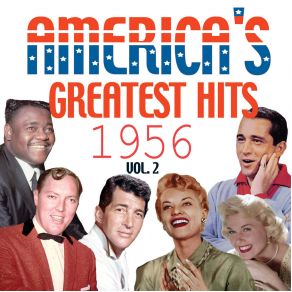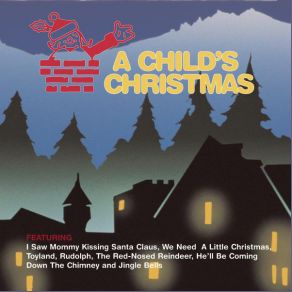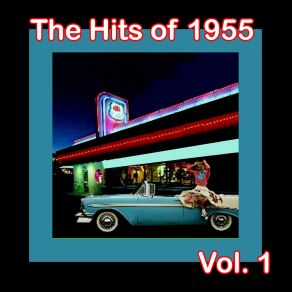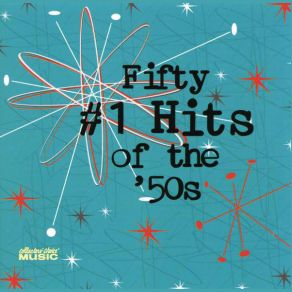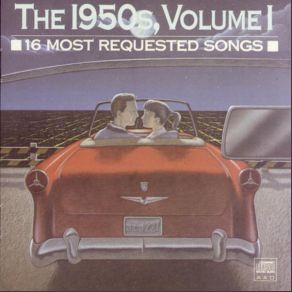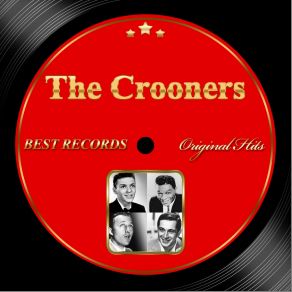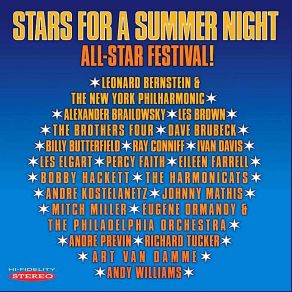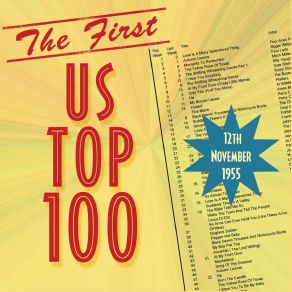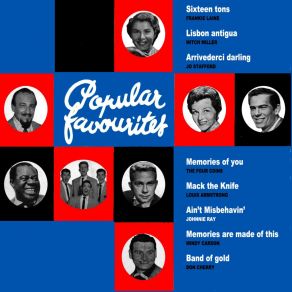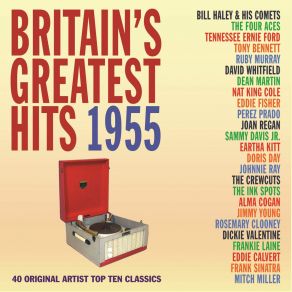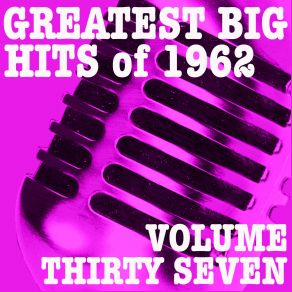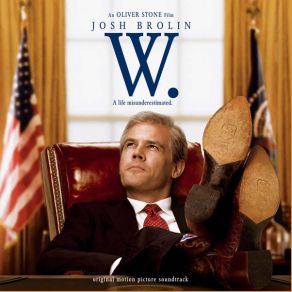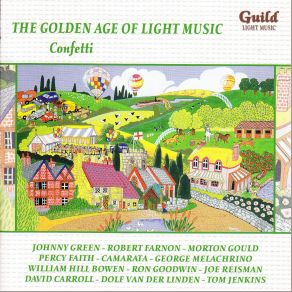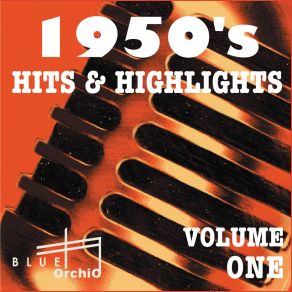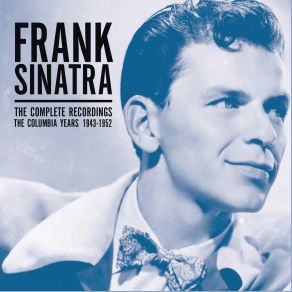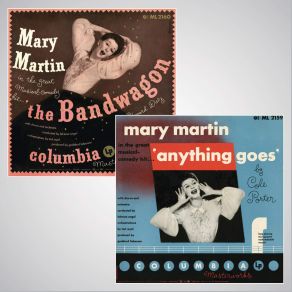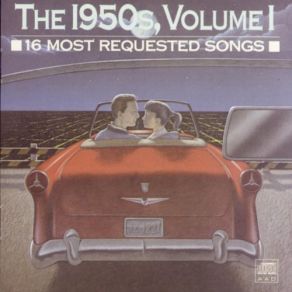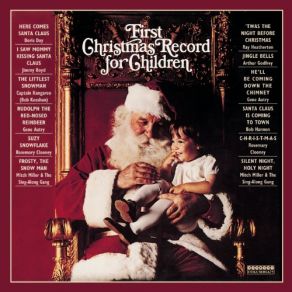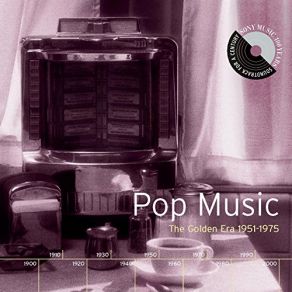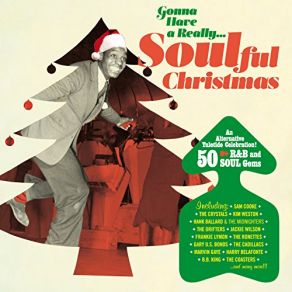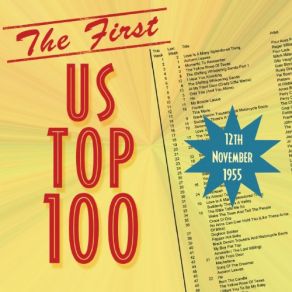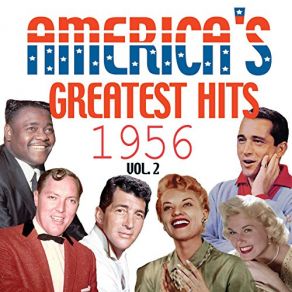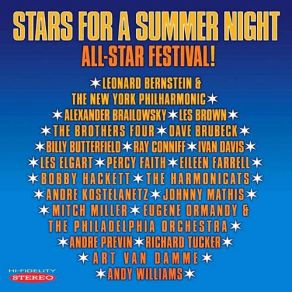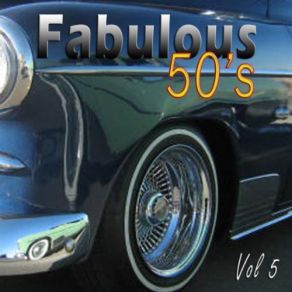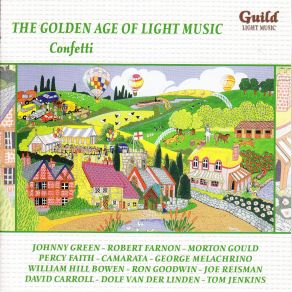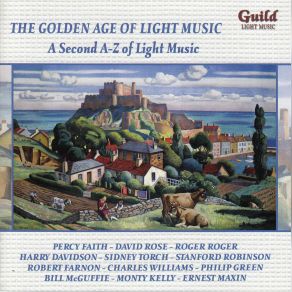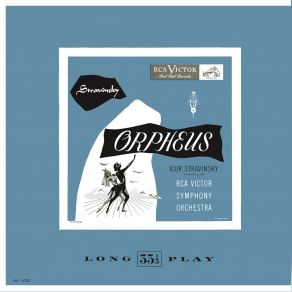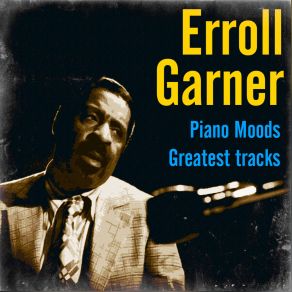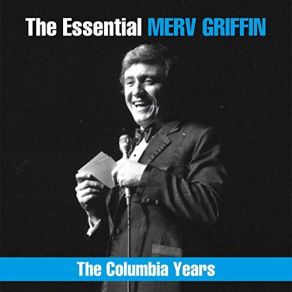Mitch Miller
Wikimp3 information about the music of Mitch Miller. On our website we have 70 albums and 70 collections of artist Mitch Miller. You can find useful information and download songs of this artist.
Biography
[Edit]For over 15 years, beginning in 1948 and lasting into the early '60s, Mitch Miller was a major force in the recording industry. He was not only one of the most powerful men in the music business for much of that time, as the head of A&R (artists and repertory) for the pop division at Columbia Records, but he was also one of that label's most popular recording artists in his own right, responsible for dozens of chart singles and a string of top-selling LPs, and also hosted his own top-rated prime-time network television music show. And that pop music career followed a decade and a half as a successful working classical musician.
Mitchell William Miller was born in Rochester, NY, on the Fourth of July, in 1911. He showed his interest in music very early in life — at six he began learning the piano and at 12 he took up the oboe. He attended the prestigious Eastman School of Music, where he made the acquaintance of a fellow student, Goddard Lieberson, who was to become a major figure in the music business two decades later. Miller graduated in 1932, and joined the music department at the Columbia Broadcasting System (CBS) radio network that same year, as an oboist and English horn player. At that time, CBS had no record label, and Miller worked as a member and sometime soloist with the CBS Symphony. Among his many jobs with the orchestra, he was one of the musicians playing the musical accompaniment on the night of Orson Welles' infamous War of the Worlds radio broadcast. He also did a fair amount of session work during those years, including a recording of Jean Sibelius' Swan of Tuonela with the Philadelphia Orchestra under Leopold Stokowski, on RCA Victor. When the network acquired the American Record Company in 1939 — which it renamed Columbia Records — Miller appeared as an oboist on recordings conducted by light classical/pop leader Andre Kostelanetz, and also worked with groups such as the Budapest String Quartet. He was featured on the earliest recordings of the music of composer Alec Wilder, who was a good friend of Miller's. And he was later the soloist on a Columbia Masterworks release of the Mozart Oboe Concerto.
In the late '40s, Miller left Columbia to join the fledgling Mercury Records label, where he initially worked in classical music, producing the Fine Arts Quartet. In 1948, he moved over to become head of A&R for the label's pop music division, and it was in that post that he signed Frankie Laine. Serving as Laine's producer (as well as conducting the orchestra on some of his sides), the singer generated a string of huge hit singles, including "Mule Train" (a million and a half seller), "That Lucky Old Sun," "Cry of the Wild Goose," and "Jezebel." One of Miller's other signings at Mercury was singer Patti Page, who had a huge hit with "Tennessee Waltz." The latter song had previously charted for its composer, Pee Wee King, and for Cowboy Copas as a country number, and for bandleader Erskine Hawkins as an R&B single, but Miller felt (correctly, as it turned out) that it had potential as a pop hit in Page's hands. He even also managed to work in a musical appearance of his own during this period, on Charlie Parker's most unusual album, Charlie Parker with Strings, playing the oboe.
In 1950, Miller came back to Columbia Records in response to an overture from his old Eastman School classmate Goddard Lieberson, who was now the label's Executive Vice President as well as head of its classical division. He hired Miller as the head of A&R for Columbia's pop music division. In those days, Columbia was among the most powerful record labels in the world, one of the "big three" American labels with RCA Victor and Decca. But the music world was changing, not only in terms of audience but technology — the 45 rpm single and the long-playing record had both been introduced in the late '40s (the latter by Columbia itself, which held the patent) to replace the heavy, easily breakable 78 rpm shellac disc; and as music media became more streamlined, it seemed that the business was headed for boom times. Miller's approach to his job was highly commercial, based on his best instincts about the appeal of specific songs and performers; in particular, where singles were concerned, he favored a highly produced sound, utilizing the studio and its capabilities — especially for overdubbing — almost as an instrument in itself, and he displayed a preference for light pop tunes. The public seemed to have an appetite for odd, catchy novelty tunes at the time, and Miller was happy to oblige. And so singers such as Rosemary Clooney dutifully recorded goofy yet memorable tunes such as "Come on-a My House" (which became a monster seller and, to her dread, virtually her signature tune for a long time) and enjoyed major hit singles.
The one discordant note in the pop operation at Columbia during Miller's early tenure came from an artist on his roster he had inherited: Frank Sinatra. The onetime heartthrob among the bobbysoxer crowd had seen immense sales in the mid-'40s, but his popularity had been slipping in the few years previous, and Miller tried to give him some help by having him record light pop and novelty tunes, to which Sinatra couldn't abide. Not that all that he did during Miller's tenure was in this category, or that some great music wasn't recorded by Sinatra at the time: the Sing and Dance with Frank Sinatra LP was recorded during this period and, in fact, saved by Miller's willingness to rely on overdubbing when the singer's voice failed at the initial sessions. But Sinatra grew increasingly distressed at the songs Miller wanted him to record; making matters even more complicated between the two of them, in principal the singer stood for exactly the opposite of what Miller presented as his approach in the studio. Throughout his career, except in the exigent technical circumstances of the "Sing and Dance" sessions, Sinatra worked live with his accompaniment in the studio, singing while the orchestra or the band played, rather than to a taped playback, and did not believe in overdubbing or any other studio-generated gimmicks. And these were supposedly Miller's strong points as a producer. As a result, the two never got along professionally, and Sinatra may have reached the nadir of his entire recording career with a Miller-mandated duet between Sinatra and a dubiously talented actress/singer/"personality" of the time named Dagmar, on a single called "Mama Will Bark." (According to some accounts, the mere mention of the song to Sinatra two decades later would put the unwitting speaker at risk of being physically assaulted by the singer.)
By 1952, Sinatra was gone from Columbia. He went on to sign with Capitol Records and within a couple of years was back on top, recording a body of singles and albums that not only sold well at the time but went on to be regarded as classics. But even without Sinatra, Columbia was still the top pop label in the world during this period, and at the time Miller seemed to have the golden touch. He also proved a marketing and strategic genius, even in the face of adversity. In 1951, when Sinatra was unwilling to record a pair of songs that he selected, Miller tapped a young singer, Al Cernick, whom Miller had signed and renamed Guy Mitchell, who cut the two disputed numbers, "My Heart Cries for You" and "The Roving Kind," which rode the charts for months and sold more than two million copies and launched a career for Cernick that lasted for the entire decade and beyond. Doris Day was already on Columbia when Miller came aboard, but it was during his tenure that she had her biggest hits, and became a pop culture institution after what had already been a long stay at or near the top of the charts.
He also brought Frankie Laine to the label in the early '50s, and saw success with the signing of Tony Bennett and such discoveries as Mahalia Jackson, Jerry Vale, Rosemary Clooney, the Four Lads, Johnny Mathis, and Johnnie Ray. And Ray, in particular, although unfairly neglected and underrated today, was important not only for the records he sold, but also for bringing a newly youthful caste to early/mid-'50s pop music and popularizing elements of R&B in his singing, all of which helped pave the way for Elvis Presley. Miller also played a small but important role in fostering the middle/late-'50s folk revival when he put the Easy Riders trio under contract. The group had a lively, catchy folk-based harmony sound and also wrote their own material (one of their members, Terry Gilkyson, had composed the Laine hit "Song of the Wild Goose"). As it turned out, they only generated one major hit, "Marianne," in 1957, but they did bridge the gap between the Weavers at the start of the 1950s and the Kingston Trio at the end of the decade, and wrote and recorded songs that became part of the repertoires of both the latter group and the New Christy Minstrels. The latter was also signed to Columbia on Miller's watch, and played a huge role in popularizing folk music at the outset of the 1960s, and in doing so opened a path for artists such as Bob Dylan, Joan Baez, Judy Collins, Phil Ochs, Tom Rush, Leonard Cohen, and others, as well as the Byrds (one of whose key members, Gene Clark, started professionally with the New Christy Minstrels).
It was in 1950 that Miller's own recording career as a pop artist and conductor began, with big-scale choral recordings credited to "Mitch Miller & the Gang." Their first hit was a bold rendition of the Israeli folk song "Tzena, Tzena, Tzena," which had also been recorded by the folk group the Weavers around this time. The group later chalked up a six-week run at the number one spot with "The Yellow Rose of Texas," in an arrangement by Don George. Miller and company also enjoyed huge hit singles with numbers like the "Colonel Bogey March" from The Bridge on the River Kwai. In 1958, he began a series of albums as well, in which he led an all-male chorus in rousing, spirited versions of mostly older tunes. These he chose with help from Boy Scout and Girl Scout groups, Rotarian clubs, camp organizations, and similar social groups, asking them what songs they enjoyed singing. "Carolina in the Morning," "Be Kind to Our Web-Footed Friends," "Down by the Old Mill Stream," and "By the Light of the Silvery Moon" were typical fare. Between 1958 and 1962, "Mitch Miller & the Gang" chalked up 19 Top 40 hits, and their success on vinyl led to CBS giving Miller a television series of his own, Sing Along with Mitch, whose artists included a young Leslie Uggams.
But it was with the recording of cover versions that Miller showed his greatest marketing acumen. He had first shown this innate ability by getting Patti Page to record "Tennessee Waltz," back at Mercury. It had previously been a modest country and R&B hit, but Page's single, as a pop hit, so overwhelmed all that came before it in sales that few listeners were even aware that those earlier versions (including one by the composer, Pee Wee King) had ever existed. This was a key way of dealing with the segmented nature of the music business, in which different records were aimed at separate groups of listeners — a single that was a hit for country audiences, and played heavily on country music radio stations, might well never get played on pop stations or heard by pop listeners, and visa versa; jazz and R&B records, outlets, and audiences were even more isolated from the mainstream. Additionally, it was customary for record companies — even the same record company — to rush out rival versions of singles that showed promise, and even a difference of a few days could determine which version of a song became a hit.
Thus, Miller got Frankie Laine to cover "High Noon," the title song to the Gary Cooper western, and Laine's version made it out three weeks earlier than the recording by Tex Ritter — who had sung it in the movie, but initially had trouble getting his label, Capitol, to get behind the song — and had a Top Five hit with it. Tony Bennett had a huge pop hit with Hank Williams' "Cold, Cold Heart," and Jo Stafford hit big with "Jambalaya" in the same way. And when Columbia had a country hit with "Singin' the Blues" by Marty Robbins, which had been recorded in Nashville under the guidance of the label's chief of country A&R, Don Law, good marketing sense dictated that Miller should get Guy Mitchell to cut a version for the pop market, which sold over a million copies. Of course, Robbins understandably objected to this effort by Miller, and a subsequent one with Mitchell's version of "Knee Deep in the Blues," believing that it cost him the chance to break into the pop market, and the potential of selling millions more copies of his own singles. But as observers correctly pointed out, this was how the record industry was set up at the time, although the era was drawing to a close.
As a recording executive, Miller was very much in tune with the tastes of the times, at least among adults. His work, epitomized by the hit singles and the first Sing Along with Mitch album, was the music listened to by millions of white middle-class (some would say middle-brow) adults who filled the suburbs that had sprung up outside of most cities since the end of the Second World War; and that seemed to suit everyone concerned just fine. Columbia Records at the time was an extension of its parent company, CBS, then known as "the Tiffany Network," with the widest, choicest audience. It had the adult suburban market in popular music, which was the dominant one; it had the Broadway cast album market locked up in ways that the general public was scarcely aware of (the company had an investor's interest in My Fair Lady, the biggest show of the era, and had an ongoing business relationship with Richard Rodgers, whose musicals The King and I, Carousel, and The Sound of Music were perennial sellers on album); it had top jazz artists, including Duke Ellington and, for the college crowd, Dave Brubeck, while those who wanted to push the envelope further could listen to Miles Davis; and in classical it had two of the most prestigious orchestras in the country, the New York Philharmonic under Leonard Bernstein and the Philadelphia Orchestra under Eugene Ormandy, as well as the services of a dozen top virtuosi. Columbia represented dignity, polish, and depth, as embodied by the philosophy of Goddard Lieberson.
Unfortunately, none of this left too much room for rock & roll music. Columbia had a foot in R&B through its Epic and OKeh labels, and Don Law in Nashville was free, within limits, to exploit the new music with any signings that he chose to pursue. But rock & roll never played a large role in Columbia's game plan under Miller. He personally loathed most of the music, and with Columbia's share of the pop music marketplace in the late '50s being what it was, he saw no reason to make it more of a priority. He had seriously looked at signing Elvis Presley in 1955, but reportedly balked at the five-figure advances being discussed by his manager, and the cost of buying out Presley's existing contract with Sun Records. And at one point, he also turned down Buddy Holly.
Even as Miller's artists and his own recordings were generating millions of dollars for Columbia, the label's market share was slowly being undercut by changes in public taste that he and the rest of the management were doing their best to ignore. Steve Sholes, the head of A&R at RCA Victor, had paid the asking price for Elvis Presley (including the buyout of the Sun contract), and also brought numerous other rock & roll and R&B stars to the label, and was starting to reap serious rewards for RCA by the end of 1956. He was reaching out to teenage listeners, and label chiefs at Decca and Capitol later had Ricky Nelson and the Beach Boys, respectively. Meanwhile, Miller's most youth-oriented artists of the late '50s and early '60s were Johnny Mathis and the New Christy Minstrels. At the start of the '60s, sales on cast albums and adult popular music were still healthy, but their growth was starting to slacken, while other companies were drawing in millions of dollars and millions of younger listeners that Columbia simply wasn't addressing with its releases. It was identified in the minds of teenagers as representing their parents' music, even as their parents' buying habits were moving away from buying as much music as they had in the 1950s.
Miller's television show remained very popular — again, mostly with middle-aged and older viewers, which, in those days before audience demographics mattered, was enough to keep it on the air — and he was something of a media superstar during this period, his smiling, bearded visage as well known as that of any variety show star. He could rightfully take pride in his discoveries of the previous decade — but by late 1964, it was becoming increasingly clear that the most important artist signed to Columbia so far in the 1960s was not one of his discoveries. Rather, it was a young folksinger and songwriter brought into Columbia by jazz-blues-gospel producer John Hammond, named Bob Dylan. Miller approved of Dylan's signing, amid the burgeoning folk revival, but he was Hammond's discovery, and the producer became something of a hero in the music histories of the period. In fairness, however, the company would never have tolerated Dylan's presence for a moment if Columbia hadn't already been selling substantial numbers of folk (or folk-style) records by the Easy Riders and the New Christy Minstrels, who represented Miller's side of the label's output. And Columbia was already looking at rock & roll a little bit more seriously in 1964 with the signing of Paul Revere & the Raiders, although it took the company a while to figure out exactly what to do with them, especially after their version of "Louie Louie" was eclipsed by a rendition cut by their Pacific Northwest-based rivals the Kingsmen.
It was obvious by 1965 that Miller's moment had passed. In particular, the British Invasion spearheaded by the Beatles' success starting early the previous year had put Columbia — which had no U.K. acts of its own, and had only just acquired its own British label, by buying up Oriole Records — in an especially weak position, and it was proving to be no brief fad on the part of younger listeners. Additionally, the sales of cast albums — a mainstay of the company for more than a decade — began to fall off as the nature and sound of the Broadway musical began changing with the times, and established figures such as Richard Rodgers withdrew from the scene with the passing of time. Miller left Columbia in 1965, the year the company signed the pioneering folk-rock group the Byrds, and their mere presence was a clear break with the past. At around the same time, the company also orchestrated a studio revamping of the sound of a folk harmony duo, Simon & Garfunkel, who had been on the label for a year without much success, in a new, more inventive form. The redubbed, high wattage single of "The Sound of Silence" was as much a new sound as the Byrds' "Mr. Tambourine Man"; their music was arguably the first genuinely new rock & roll sound ever to come from Columbia Records, so new that they seemed to require a different label than "rock & roll." For a company that had scarcely found room for rock & roll on its roster, during the music's first decade, becoming one of the birthplaces of what came to be called "rock" music was a giant step forward. Sing Along with Mitch was finally canceled in 1966, not a moment too soon in the eyes of many viewers, its relentlessly happy tone being very much at odds with how a lot of viewers were starting to feel about the Vietnam War, protests in the street, and all the other strife of the era. Columbia Records was taken over by a new, younger regime under a new president, attorney Clive Davis, who was determined to build its roster in a new direction and, in effect, thrusting the label into the psychedelic era (and beyond) in one fell swoop with signings such as Janis Joplin.
Miller occasionally re-emerged as a conductor of light classical recordings, but otherwise disappeared from the music scene after the mid-'60s, at least as a recording artist. He did re-emerge in 1986, hosting a tribute to his late friend Alec Wilder, and his album Sing Along with Mitch was one of the first low-priced CDs issued by Columbia Records in the late '80s. In the 1990s, there existed no less than ten compact discs of Miller's recordings, albeit most of them compilations of his most popular single sides; and though he had left behind recording and the airwaves some 30 years before, he was still a well-recognized figure on the streets of the Upper West Side of Manhattan, where he was still living in his nineties. And, in perhaps the best tribute to his career as an executive and producer, the work of the artists he signed and produced in the 1950s — including Johnny Mathis, Rosemary Clooney, and Johnnie Ray — continued to sell 50 years later. Miller himself died shortly after his 99th birthday, in July 2010.
Title: I Wonder What's Become of Sally? / Ain't She Sweet (Remastered) - Single
Artist: Mitch Miller
Genre: Pop
Title: School Days / Rosie O'Grady / Sidewalks of New York (Remastered) - Single
Artist: Mitch Miller
Genre: Pop
Title: When the Red Red Robin Comes Bob Bob Bobbin' Along (Remastered) - Single
Artist: Mitch Miller
Genre: Pop
Title: That's My Weakness Now / Last Night On the Back Porch (Remastered) - Single
Artist: Mitch Miller
Genre: Pop
Title: Millennium - Single
Artist: Mitch Miller, Taryn Kuntzman
Genre: Theatre/Soundtrack, Classical
Title: Moonlight Bay / There's Yes! Yes! In Your Eyes (Remastered) - Single
Artist: Mitch Miller
Genre: Pop
Title: Sweet Adeline / Let Me Call You Sweetheart (Remastered) - Single
Artist: Mitch Miller
Genre: Pop
Title: The Band Played On / Oh! You Beautiful Doll (Remastered) - Single
Artist: Mitch Miller
Genre: Pop
Title: When You Were Sweet Sixteen / Silver Threads (Remastered) - Single
Artist: Mitch Miller
Genre: Pop
Collections
Title: Movie Music: The Definitive Performances
Genre: Theatre/Soundtrack
Title: Best of America Yankee Doodle USA Anthems
Genre: Pop
Title: A Jazzy Christmas Time
Genre: Jazz, Traditional Pop Music
Title: 123 Classic Hits from the Early 1950's
Genre: Pop
Title: Dreaming of an Old Christmas, Vol. 2
Genre:
Title: Christmas Jazz Greats - Smooth and Swinging
Genre: Jazz, Traditional Pop Music
Title: White Christmas: The 20 Best Christmas Songs of All Time
Genre:
Title: Instrumental Jukebox Hits of the 50's & 60's
Genre: Instrumental
Title: 20 Swingin' Christmas Jazz Hits
Genre:
Title: Fireside Christmas Tunes
Genre: Traditional Pop Music
Title: Christmas for Lovers
Genre: Jazz, Traditional Pop Music
Title: Country Christmas Greats
Genre: Country, Traditional Pop Music
Title: 1950's Nostalgia, Vol. 2
Genre: Pop
Title: America's Greatest Hits 1956, Vol. 2
Genre: Pop
Title: A Child's Christmas
Genre:
Title: The Most Beloved Christmas Holiday Songs
Genre:
Title: The Hits of 1955, Vol. 1
Genre: Pop
Title: Hit Parade Classics Vol 1
Genre: Pop
Title: Fifty #1 Hits of the '50s
Genre: Pop
Title: 16 Most Requested Songs of the 1950s, Vol. 1
Genre: Pop
Title: Original Hits: The Crooners
Genre: Jazz
Title: Stars for a Summer Night - All-Star Festival!
Genre: Rock
Title: The First Us Top 100 November 12th 1955, Pt. 1
Genre: Pop
Title: Popular Favorites
Genre: Jazz
Title: Classic Holiday Tunes
Genre: Traditional Pop Music
Title: Country Christmas
Genre: Country, Traditional Pop Music
Title: 40 Instrumental Hits - The Big Hits of the 50's Era
Genre: Jazz, Instrumental
Title: 50's Top Ten Hits Vol 2
Genre: Pop
Title: Britain's Greatest Hits 1955
Genre: Pop
Title: Greatest Big Hits of 1962, Vol. 37
Genre: Pop
Title: 16 Most Requested Songs: Christmas
Genre: Traditional Pop Music
Title: Children of Christmas
Genre:
Title: The Golden Age of Christmas Music Vol 2
Genre: Traditional Pop Music
Title: The Golden Age of Christmas Music Vol 4
Genre:
Title: The Golden Age of Christmas Music, Vol. 1
Genre:
Title: Christmas 16 Most Requested Songs
Genre: Traditional Pop Music
Title: 20 All Time Greats Of The 50's
Genre: Pop
Title: Stars Around Cole Porter
Genre: Jazz
Title: Voices of Christmas Cheer
Genre:
Title: W. (Original Motion Picture Soundtrack)
Genre: Theatre/Soundtrack
Title: 100 Best Dance Orchestras
Genre:
Title: The Golden Age of Light Music: Confetti
Genre:
Title: 1950's Hits & Highlights, Vol. 1
Genre: Pop
Title: Popular Favourites No. 8
Genre: Jazz
Title: Radio Vintage hits USA No. 3
Genre: Pop
Title: Vintage Music Nº1 "Cocktail Hits"
Genre: Pop
Title: Wenn der Sommer geht und die Stimmung bleibt, Vol. 1
Genre: Pop
Title: Country Gold, Vol. 3
Genre: Country
Title: Canciones Con Historia: Vintage Summer
Genre: Pop
Title: Million Dollar Memories, Vol. 8
Genre: Pop
Featuring albums
Title: The Complete Recordings: The Columbia Years 1943-1952
Artist: Frank Sinatra
Genre: Jazz, Vocal Jazz, Pop, Theatre/Soundtrack
Title: The Bridge On the River Kwai (Score from the Motion Picture)
Artist: MALCOLM ARNOLD
Genre: Theatre/Soundtrack
Title: Major Dundee (Music From the Motion Picture)
Artist: Daniele Amfiteatrof
Genre: Theatre/Soundtrack
Title: The Guns Of Navarone (Original Motion Picture Soundtrack)
Artist: Dimitri Tiomkin
Genre: Theatre/Soundtrack
Title: A Tribute to James Dean
Artist: Ray Heindorf, The Warner Bros. Studio Orchestra
Genre: Theatre/Soundtrack
Title: Pop Music: The Golden Era 1951-1975
Artist: Various
Genre: Blues, Rock, Pop, Theatre/Soundtrack, Vocal & Symphonic
Title: Stars for a Summer Night - All-Star Festival!
Artist: Various Artists
Genre: Jazz, Smooth Jazz
Title: The Golden Age of Light Music: "Soloists Supreme"
Artist: Percy Faith, Norrie Paramor, Victor Young, Laurie Johnson, Robert Farnon, Paul Whiteman, Hugo Winterhalter, Hugo Winterhalter Orchestra, Werner Muller, Richard Hayman, Charles Williams, The Percy Faith Orchestra, Norrie Paramor And His Orchestra, Carroll Gibbons, Leroy Anderson, Rias Tanzorchester, Sidney Torch, Sidney Torch & Orchestra, Charles Shadwell, Ray Martin, Laurie Johnson Orchestra, The Savoy Hotel Orpheans, Victor Young Orchestra, Peter Yorke, BBC Variety Orchestra, Camarata Orchestra, Richard Hayman Orchestra, Ray Martin Concert Orchestra, Robert Farnon Orchestra, Charles Williams Concert Orchestra, Danish State Radio Orchestra, Leroy Anderson 'Pops' Concert Orchestra, Jackie Bond Orchestra, Paul Whiteman Concert Orchestra, Peter Yorke Concert Orchestra, Victor Young Singing Strings, Jackie Bond
Genre: Classical
Title: The Golden Age of Light Music: A Second A-Z of Light Music
Artist: Various Artists
Genre: Classical
Title: Stravinsky: Duo concertant & Pastorale - Bloch: Baal Shem
Artist: Igor Stravinsky
Genre: Classical
Title: The Essential Merv Griffin - The Columbia Years
Artist: Merv Griffin
Genre: Jazz, Pop, Easy Listening









